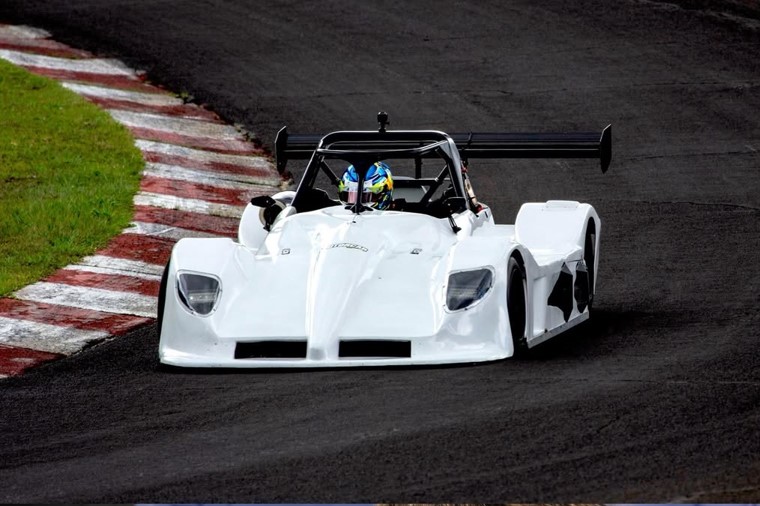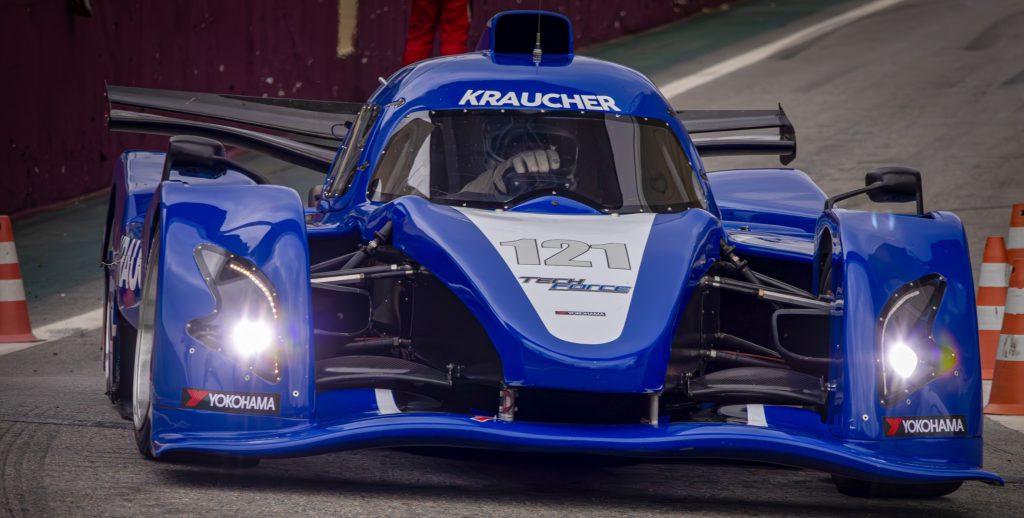The 2025 season of the Campeonato Gaúcho de Endurance (CGE) began with the 2 Hours in Tarumã, bringing several new features to the regulations that have already been presented here. Now that the race is over, let’s analyze the performance of this first stage that brought back several cars that were parked to the tracks.
As in our 2024 analysis, we used the #12 Sigma P2 G5 as a reference model to compare the cars’ performance evolution. With the 2025 P1 largely following the 2024 P2 regulations, the technical differences can be disregarded and give a good insight into the differences in track conditions.
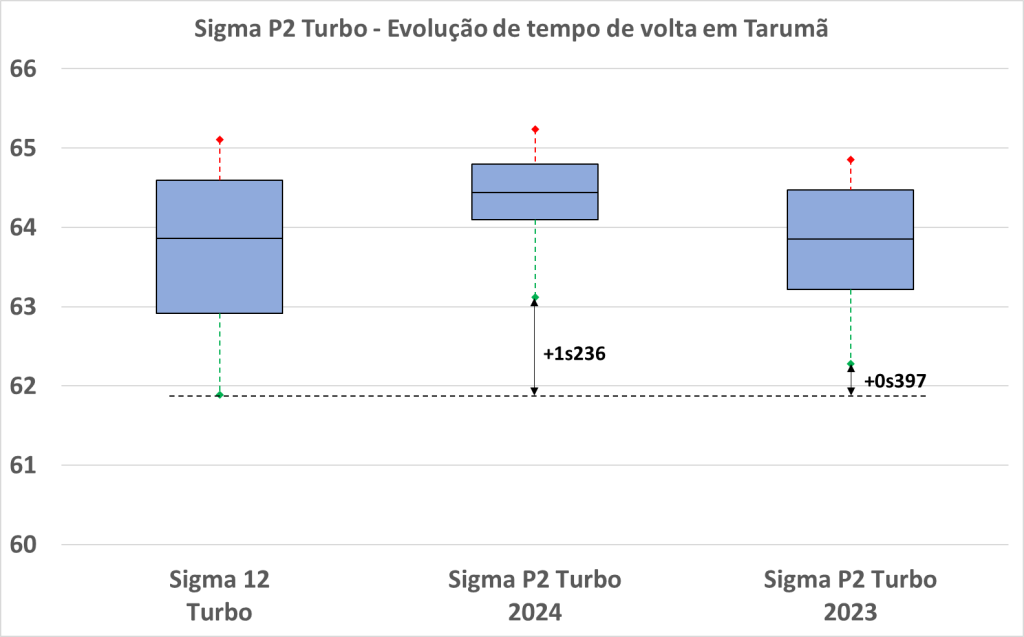
Jindra Kraucher’s best lap time in the 2025 race was 1m01s886, 1s236 faster than the 2024 time, and almost four tenths slower than the time recorded in 2023, indicating good track conditions over the weekend.
The news
Some major news and some returns marked the opening stage of the 2025 Gaúcho Endurance Championship. First, the MC Tubarão team presented a new P3 prototype, based on the GeeBee R5 from GT Race Cars. Equipped with a naturally aspirated Ford Duratec engine, the model received some updates developed by the Campo Bom team and the traditional Yokohama paint job, but an accident during free practice took the car out of the competition even before qualifying. The team continues to prepare the car, which should debut in the second stage of the championship.
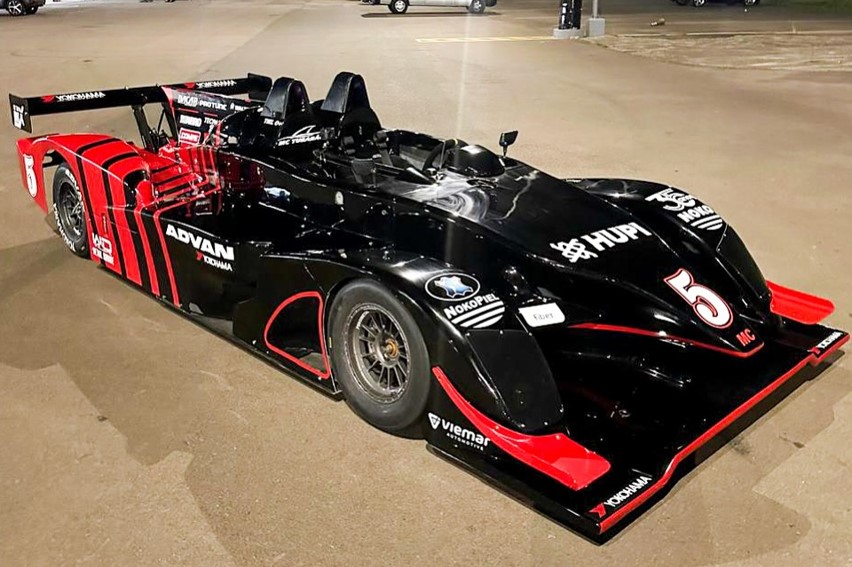
Also in P3, there was the return of the VBS 001 prototype, a staple of the Brazilian Endurance Championship in the first decade of the 2000s, and which had last participated in races during the 2019 Endurance Brazil season. Driven by Gustavo Frey and Alexandre Souza, the VBS brought the HALO installation as a novelty and surprised with the pole position in its class.
Another great return to the tracks was the beautiful DTR01 prototype, now driven by Ian Ely and Eduardo Dieter. After showing great speed in its stint at Endurance Brasil, the prototype from Rio Grande do Sul returned in great style, taking pole position overall in the race.
The car appeared with small changes in the race, such as the change in the shape of the air intakes for the rear brakes (which went from a square profile to a circular profile) and the new louvres over the side air intakes.
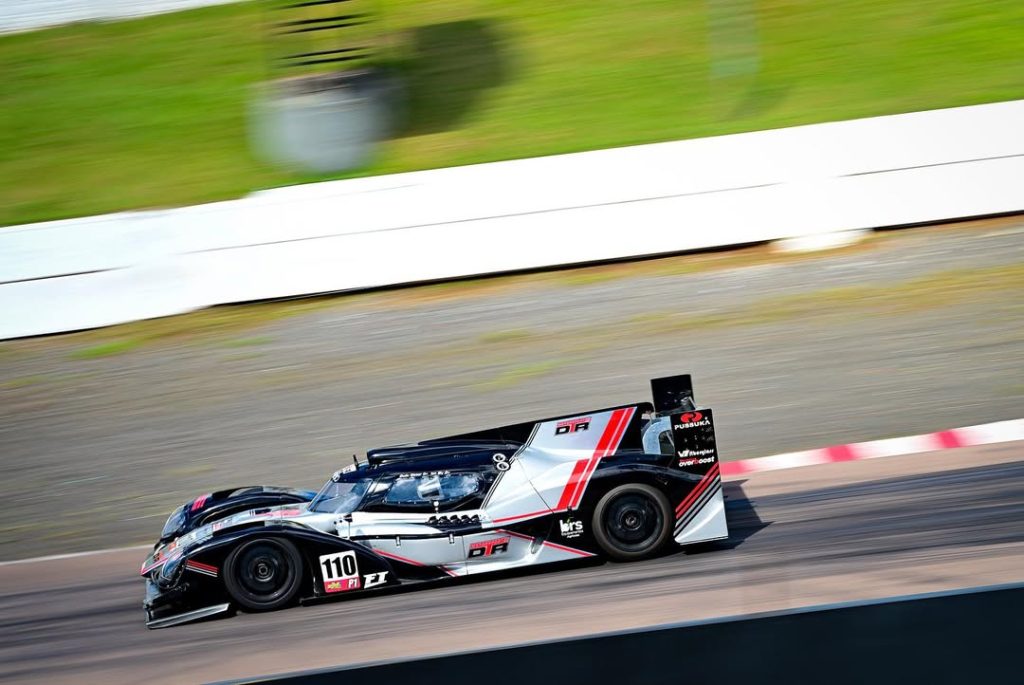
P1 Qualifying Analysis
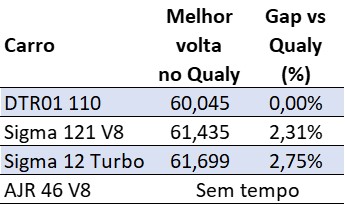
Surprisingly, the pole position went to the DTR01 of Ian Ely and Eduardo Dieter, who returned triumphantly after a 5-year hiatus from the track, setting a time of 1m00s045 – exactly the target time set by the BoP for P1. However, during the weekend both the DTR and the AJR 46 of Mottin Racing managed laps in the 59-second range. If this performance continues, it is not impossible that the BoP will be revised for the next rounds.

Race Analysis
To evaluate the performance of the various prototypes, we chose the 37 fastest laps of the three cars that completed the race, which is equivalent to 40% of the laps completed by the winners Adriano Baldo, Juliano Moro and Ernani Kuhn. In the case of Jindra Kraucher’s Sigma, we considered 40% of the laps completed before the incident that took it out of the race, which may generate a sampling bias in the comparison, but still provides interesting information.
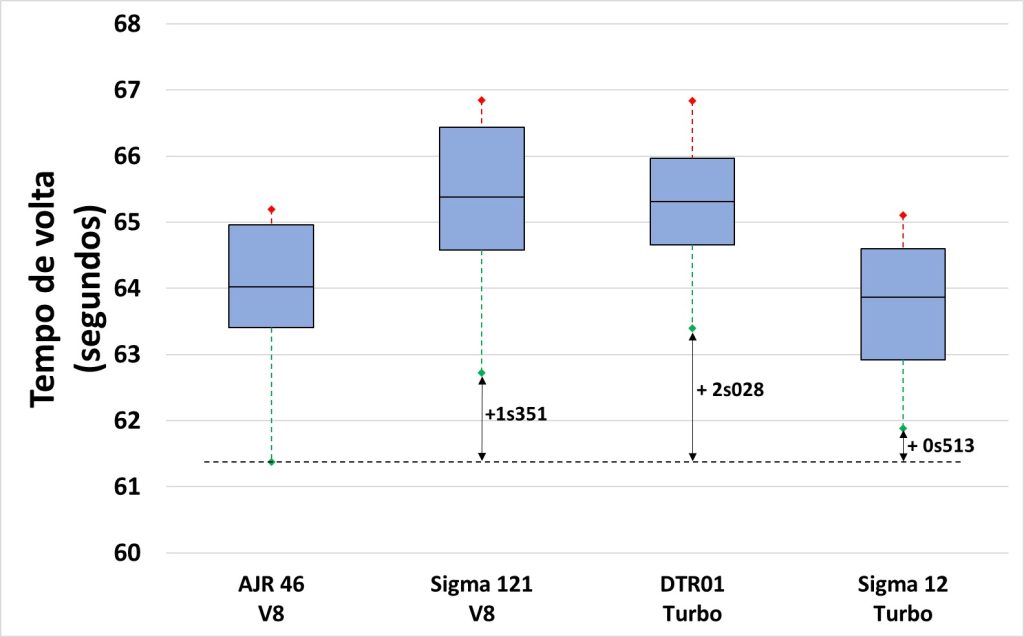
The lap time amplitude of the four P1 class cars were between 3 and 4 seconds, showing a little of the dynamics of a race affected by several yellow flags and even a red flag.
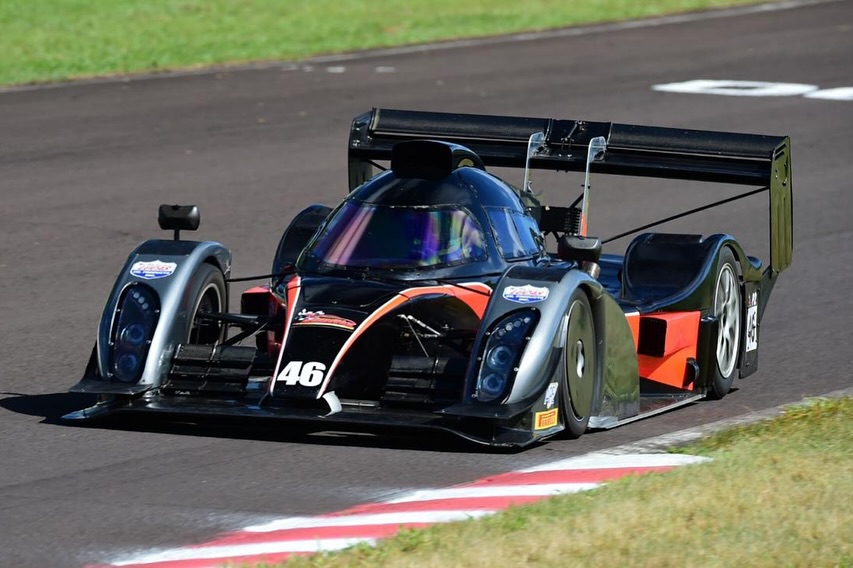
The best lap of the race was achieved by the AJR #46, with a time of 1m01s373, around 3% above the best time recorded in free practice, as the car did not participate in qualifying.
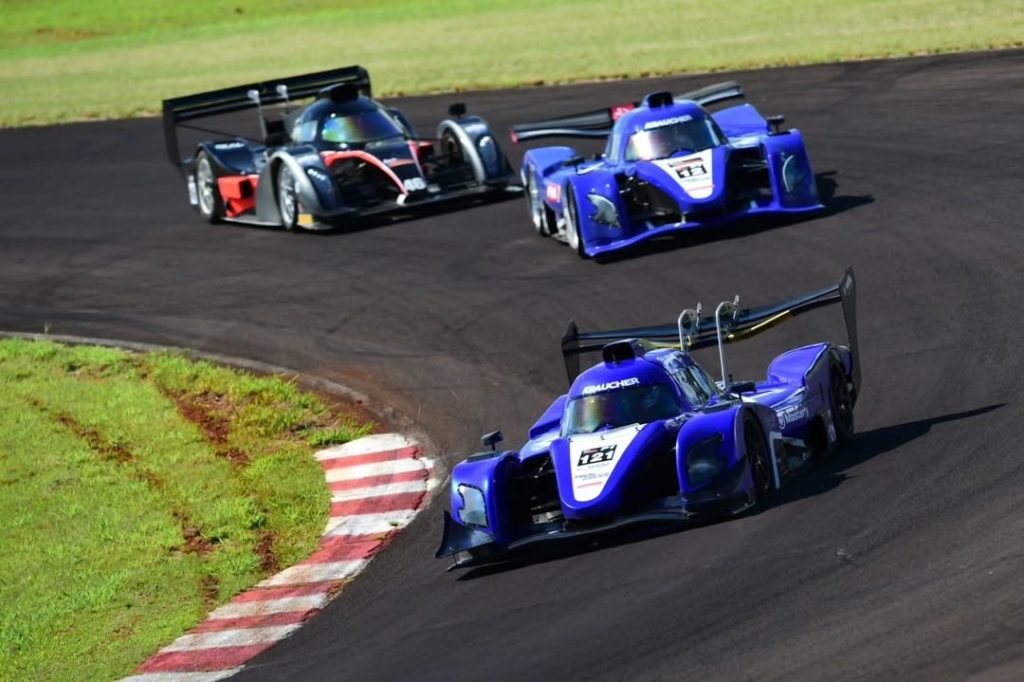
The smallest gap between classification and test was with Jindra Kraucher’s Sigma G5 with just 3 tenths difference, showing the consistency of the package that has been developed for three seasons.
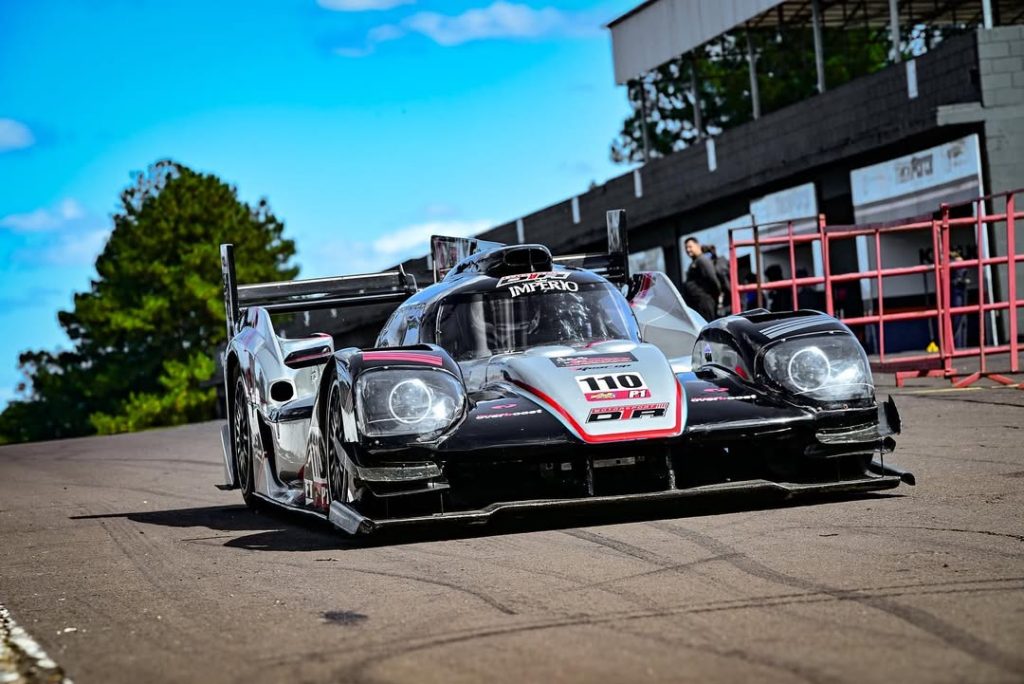
The biggest gap between practice and the race was with the DTR01, which is not a surprise given that the prototype suffered a third gear breakage shortly after taking pole position, and started after about half an hour of racing to gain track mileage, maintaining a lighter pace.

About the method
To analyze the competitors’ race pace, we developed a modified box diagram, using as a reference the best laps of the best car from each manufacturer.
For this analysis, we followed the same logic used in the BoP of the WEC Hypercar category, but considering the 40% of fastest laps (to account for the effect of different pit strategies and the degradation of the car during the race).
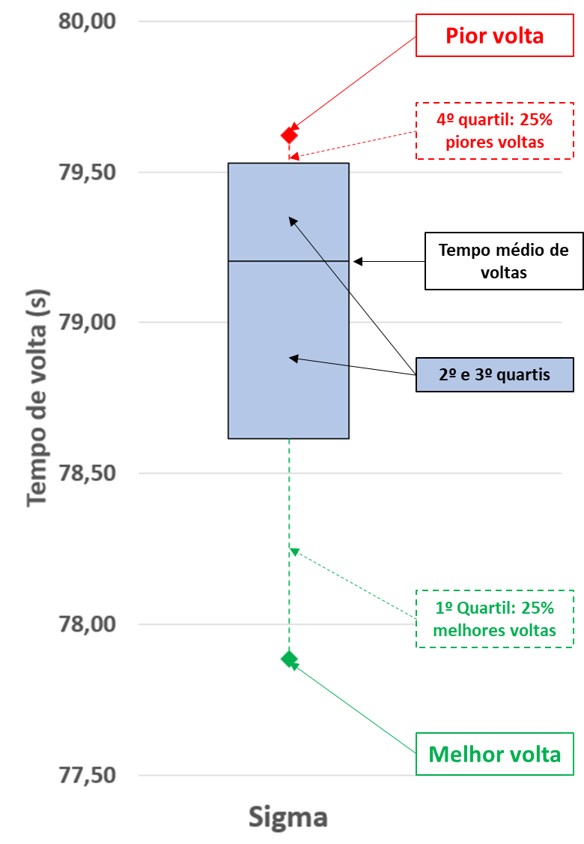
The graph data is interpreted as follows:
- Bottom green dot: represents the best lap of the race for a given car;
- Dashed green line: represents the 25% fastest laps in the sample (1st quartile);
- Central box: represents the central 50% of turns in the sample (2nd and 3rd quartiles);
- Center line: average lap time considering the sample;
- Dashed red line: represents the slowest 25% of laps in the sample (4th quartile);
- Top red dot: worst lap of the sample
In general terms, the smaller the green and red lines, the smaller the dispersion, i.e., the more constant the car was. Likewise, the smaller the central box, the more constant the performance was. One limitation of the sample size and type chosen is that the distribution does not exhibit “normal” behavior in both directions, so that the first quartile (green line, 25% best laps) will always appear elongated in relation to the fourth quartile (red line, 25% worst laps).

